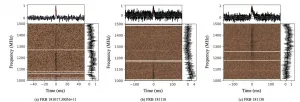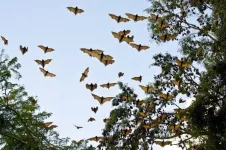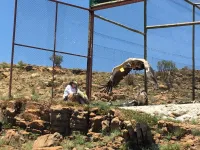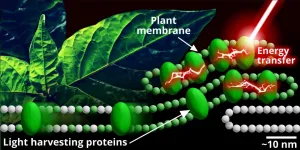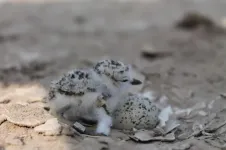(Press-News.org) A study conducted by researchers at the University of Rochester Medical Center (URMC) - in collaboration with several other universities - indicates that breastfeeding women with COVID-19 do not transmit the SARS-CoV-2 virus through their milk, but do confer milk-borne antibodies that are able to neutralize the virus.
The study, "Characterization of SARS-CoV-2 RNA, antibodies, and neutralizing capacity in milk produced by women with COVID-19," published on February 9 in the journal mBio - analyzed 37 milk samples submitted by 18 women diagnosed with COVID-19. None of the milk samples were found to contain the virus, while nearly two thirds of the samples did contain two antibodies specific to the virus.
Critically, this study provides evidence that COVID-19 positive mothers should not be separated from their newborn children. At the onset of the pandemic, major health organizations have often provided contradictory advice on whether this separation was necessary. This report will hopefully offer new clarity on guidance for post-natal mothers.
"We only want to sequester a mother from her baby if it's medically necessary," said co-investigator Bridget Young, Ph.D., assistant professor in the Department of Pediatrics at URMC, "However, the issue was very confusing for practitioners who don't have sufficient evidence. These early results suggest that breast milk from mothers who have had a COVID-19 infection contains specific and active antibodies against the virus, and that they do not transfer the virus through milk. This is great news!"
URMC was funded over $130,000 by the Bill and Melinda Gates Foundation for this research. The initial study published in mBio reported on the first group of 18 women who submitted milk samples. Results from the larger study will be forthcoming, which will hopefully reinforce the initial findings, according to Young.
The URMC research group is led by Antti Seppo, Ph.D., in the Department of Pediatrics. Other co-investigators include Casey Rosen-Carole. M.D., medical director of lactation services and programs at URMC, and Kirsi Jarvinen-Seppo M.D., Ph.D., associate professor in the Department of Pediatrics and chief of Pediatric Allergy and Immunology.
Mark Sangster, PhD, and David Topham, PhD, both research professors in the Department of Microbiology and immunology, did the primary work measuring antibody assay levels in their lab.
"We found high levels of IgA - a common antibody in blood and other body fluids - in their breast milk. igA's migrate in mucosal transfer, therefore this is encouraging information that mothers transfer these antibodies," said Sangster.
The full research team also included scientists from the University of Rochester School of Medicine and Dentistry, Brigham and Women's Hospital and Harvard Medical School, and the University of Idaho. The team now has enrolled nearly 50 women who were diagnosed with COVID-19 and has followed their progress with the disease for as long as two months.
The study was initiated to address the lack of existing research into COVID-19 in breastmilk. The next steps will be to see if the initial results are replicated in larger samples.
"This work needs to be replicated in larger cohorts. Additionally, we now need to understand if the COVID-19 vaccine impacts breast milk in the same way," said Young.
INFORMATION:
Fast radio burst (FRB) is a kind of mysterious radio flashes lasting only a few thousandths of a second. Confirmed to be the cosmological origin in 2016, FRB has the potential to provide insights into a wide range of astrophysical problems.
Dr. NIU Chenhui from the team led by Dr. LI Di and Dr. ZHU Weiwei from National Astronomical Observatories of Chinese Academy of Sciences discovered three new FRBs with high dispersion measure from the massive data of the Five-hundred-meter Aperture Spherical radio Telescope (FAST).
Their findings were published in The Astrophysical Journal Letters on March 3.
The discovery indicated that these three FRBs happened billions of years ago when the ...
Intrauterine growth restriction (IUGR) is common and concerning, but few therapeutic options exist for pregnant mothers who receive this diagnosis. IUGR is a condition in which a baby in the womb is measuring small for its gestational age, often because of issues with the placenta, resulting in compromised or insufficient transfer of oxygen and nutrients to the growing fetus. The developing fetal brain is particularly vulnerable to these effects. One out of every 10 babies is diagnosed with IUGR, and infants with IUGR are at increased risk of death and neurodevelopmental impairment. ...
Biologists from RUDN University suggested adding a marjoram-based supplement to the diet of common carp to support the growth of the fish and improve their resistance to bacterial infections. The results of the study were published in the Fish & Shellfish Immunology journal.
Cyprinus carpio is a type of large omnivore fish that grows 35-40 cm long in three to five years. 4 mln tons of carps were bred in aquacultural farms in 2010. Such farms protect natural populations of Cyprinus carpio while at the same time satisfying the market demand. However, as farmers strive for higher productivity, aquacultural farms become more and more crowded which leads to the lack of nutrients and harms the health of the fish. A team of veterinarians ...
CABI scientist Dr Arne Witt has shared his expertise on invasive alien plant species as part of a new paper which argues that healthy ecosystems are vital in reducing the risk of future pandemics - such as coronaviruses (including COVID-19) - that threaten human health.
The paper - 'Land use-induced spillover: priority actions for protected and conserved area managers' - is published as part of a special issue by the journal PARKS entitled 'COVID-19 and Protected Areas: Essential Reading for a World Haunted by a Pandemic.'
Lead author Dr Jamie K. Reaser - along with a team of researchers from institutions including the African Wildlife Foundation, the University ...
Exposure to SARS-Co-V2, the virus that causes COVID-19, can put otherwise healthy children and adolescents at risk for Multisystem Inflammatory Syndrome in Children (MIS-C), a rare but possibly life-threatening pediatric condition that can cause severe inflammation in organs like the heart, brain, lungs, kidneys and gastrointestinal system.
Diagnosing and treating MIS-C -- which has affected 2,600 children since May 2020 and is known to occur in children who have tested positive for SARS-Co-V2 or been exposed to someone with COVID-19 -- is difficult because respiratory and gastrointestinal symptoms can be similar to severe COVID-19. Other features of MIS-C are very similar to Kawasaki disease, which causes inflammation ...
Rare earth elements are the gold of the 21st century: rare and highly prized all over the world. Most known and economically viable sources of rare earths are located in China, where more than 80 percent of them are refined. This has resulted in a near monopoly situation, with China dominating international trade, particularly in heavy rare earths. Geologists and materials scientists at FAU have now discovered a new way of finding new and previously unknown deposits of rare earths, or rare earth metals, worldwide. They have published the findings of their study in the journal Geology.
Rare earth metals are irreplaceable for manufacturing advanced high-tech industrial products due to their luminescent and ...
Conservationists who apply wing tags for identifying Cape Vultures--a species of African vulture that is vulnerable to extinction--are putting the birds' lives further at risk, a new movement ecology study has shown. Researchers from the Max Planck Institute of Animal Behavior in Germany and VulPro NPC in South Africa have demonstrated that Cape Vultures fitted with tags on their wings travelled shorter distances and flew slower than those fitted with bands around their legs. The research emphasises the importance of investigating the effects that tagging methods can have on the behaviour and conservation of species, prompting a shift towards the ...
New scientific techniques are revealing the intricate role that proteins play in photosynthesis.
Despite being discovered almost 300 years ago, photosynthesis still holds many unanswered questions for science, particularly the way that proteins organise themselves to convert sunlight into chemical energy and at the same time, protect plants from too much sunlight.
Now a collaboration between researchers at the University of Leeds and Kobe University in Japan is developing a novel approach to the investigation of photosynthesis.
Using hybrid membranes that mimic natural plant membranes and advanced microscopes, they are opening photosynthesis to nanoscale investigation - the study of life at less than one billionth ...
In snowy plovers, females have overcome traditional family stereotypes. They often abandon the family to begin a clutch with a new partner whereas the males continue to care for their young until they are independent. An international team led by scientists from the Max Planck Institute for Ornithology in Seewiesen, Germany, has now investigated the decision-making process that determines the duration of parental care by females. They found that offspring desertion often occurs either under poor environmental conditions, when chicks die despite being cared for by both parents, ...
To highlight tumours in the body for cancer diagnosis, doctors can use tiny optical probes (nanoprobes) that light up when they attach to tumours. These nanoprobes allow doctors to detect the location, shape and size of cancers in the body.
Most nanoprobes are fluorescent; they absorb light of a specific colour, like blue and then emit back light of a different colour, like green. However, as tissues of the human body can emit light as well, distinguishing the nanoprobe light from the background light can be tough and could lead to the wrong interpretation.
Now, researchers at Imperial College London have developed new nanoprobes, named bioharmonophores and patented at Imperial, ...
